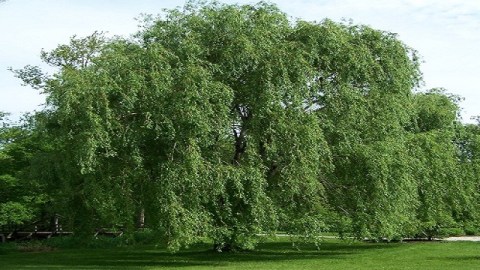The Willow-Bark Fallacy [and a challenge to readers]

In the history of discovery, most discoverers struggled to recognize their discovery. The value of Gregor Mendel’s famous pea experiments were only recognized decades after his death. Without the theory of evolution—or the concept of heredity or DNA—Mendel had little idea what, exactly, he had uncovered. When Galileo viewed Saturn’s rings (the first person to do so) he incorrectly guessed that they were moons.
In 1537, the French barber surgeon Ambroise Pare went to war against the Holy Roman Emperor, Charles V. As a medic, he used oil and elderberry to cauterize and heal wounds from firearms. Once, he ran out of oil and used “a digestive made of egg yolk, oil of roses and turpentine” as a substitute. He discovered that those with the substitute treatment healed much faster and experienced less discomfort. What he didn’t realize was that thanks to his short supply of oil, he became one of the first physicians to implement a crucial component of the scientific method: the control group. Unfortunately, the value of a control group never occurred to him, and physicians would continue to kill people they could have saved for another few hundred years.
Historians are drawn to these near-misses. In his early teens, Blaise Pascal constructed the first mechanical calculator, ideal for a 17th century accountant, yet ignored for 250 years. The dice-throwing and gambling Greeks were wily mathematicians but never explored probability and statistics. Why?
On the road to discovery, we rarely know what we are about to discover—if we did, we would have already discovered it.
This brings me to Druin Burch’s Taking the Medicine*, from which I discovered the following anecdote and insight:
In 1757, an English clergyman named Edward Stone took a walk. For unknown reasons (even to Stone) he decided to taste the bark of a willow tree. It was bitter. But it reminded Stone of cinchona, which at the time was used to cure malaria. Stone subscribed to the ancient and erroneous maxim that “many natural maladies carry their cures along with them or that their remedies lie not far from their causes.” From this, he reasoned that “since malaria was very coming in the marshy places where willow grew” Burch writes, “it was likely that the tree would cure the disease.”
Stone collected the bark, waited a few months until it was dry and pounded it into a powder. He began treating patients who had malaria and discovered that the bark was an efficacious treatment. Given that cinchona was expensive (it had to be shipped from South America) this was good news. Stone wrote a letter to the Royal Society and his remedy was adapted around the country.
The problem was the dried willow bark didn’t cure malaria – it simply reduced fevers (it was later synthesized and is now the main ingredient in aspirin). As Burch points it, “Stone’s achievement was to note a real effect of the bark – its ability to bring down fevers – even though he mistook this for a guarantee of its helping provide a cure.” It gets worse. When the Napoleonic war broke out, importing cinchona became harder, which rose the demand for the bark. “Willow, which did not cure malaria, thus partly replaced cinchona, which did.”
So let us term this The Willow Bark Fallacy: improving something based on erroneous beliefs and falsely believing that you know what you’ve improved, which actually renders things worse off in the long run.
The Challenge: I challenge my readers to think of other examples (from as many domains as possible) of the W-B Fallacy. I’m eager to hear what you’ll come up with. You can post in the comments or email me directly
* The Pare also comes from Burch’s book.





